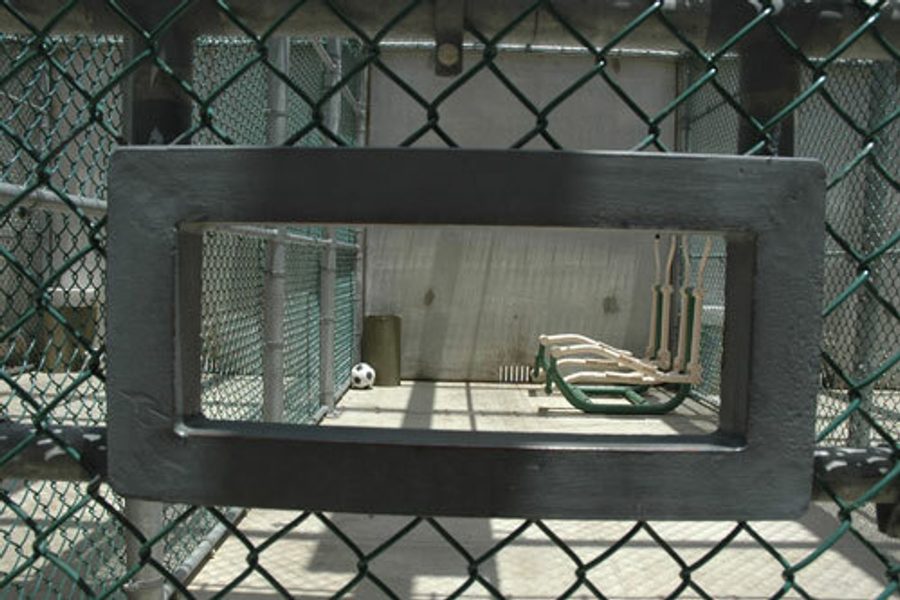
The explosive growth of the nation’s prison system has catalyzed activism in various sectors – drug policy, public health, racial and gender justice, even environmentalism.
The reaction of organized labor, however, reveals the complex intersection between entrenched economic interests and the struggle for equity in criminal justice policy.
Last week, leaders of the Council of Prison Locals, an affiliate of the American Federation of Government Employees, used the anniversary of a correctional officer’s death to press for more prison funding.
Union advocates presented the killing of Jose Rivera at the Atwater prison as evidence that prison staff are ill-equipped to deal with safety risks posed by inmates. They have demanded more federal money and protective gear.
After Rivera’s death, current and former correctional officers argued that Atwater symbolized the consequences of prison underfunding. One told the Merced Sun-Star, “I would say that almost every guy in there probably has some kind of sharp weapon on him.” Another attributed Rivera’s death to recent staff cuts.
This strand of prison activism diverges sharply from the movement for comprehensive prison reform, which includes reinvestment of criminal justice funding into community-based solutions and a more humane government response to crime.
The prison policy debate in California delineates the rifts between different parties that all claim to want reform. A few years ago, Governor Schwarzenegger set out to revamp a system that was overcrowded, rife with abuses, and an increasingly brutal place to live and to work.
But the reform effort from the outset has been dominated by prison industry insiders.
Like their federal counterpart, California’s prison union lobby has raised alarm about unsafe prison conditions. But their massive political apparatus speaks to an agenda that goes beyond just protecting workers.
According to an analysis (PDF link) of the California Correctional Peace Officers Association published by the Stanford Criminal Justice Center, the union has helped stonewall key reform efforts. Its contracts, for example, have been criticized for fostering a culture of abuse and corruption.
The union poured money into an intense publicity campaign to kill Proposition 5 (2008), a ballot initiative to reorient drug sentencing policy toward rehabilitation and treatment. Ultimately, Schwarzenegger allied with corrections officers to oppose the measure, arguing that it was “written by people who care more about the rights of criminals.”
Yet California’s prison overload has nudged the CCPOA toward progressive reform initiatives, like sentencing reform. (Economic necessity is also pressuring state officials to rethink the state’s reliance on incarceration).
While the CCPOA’s positions could be malleable, the Stanford Criminal Justice Center (PDF link) said that the group has constrained the parameters of the reform debate:
The CCPOA public relations campaign, whether misleading or not, accentuates the political vulnerabilities of the inmate population — reinforcing public fears and stereotypes and perpetuating a climate that is inhospitable to prison reform.
No one would fault unions for acting to protect their members. But no one gains when the debate is mired in the get-tough mentality that has turned the “corrections” system into one of the country’s most shameful hypocrisies.
As one of many elements at play in the prison reform movement, staff unions will advocate for changes that serve their interests and oppose those that don’t. But to working people in general, the public conversation about the country’s incarceration addiction means much more than just partisan machinations.
Federal correction officers have claimed that the staff-to-inmate ratio at their facilities is unacceptable. They pay far less attention to other alarming disproportionalities (PDF link): the ratio of the prison population to the general population, for instance, or the persistent racial disparities throughout the criminal justice system.
Then there’s the ratio of prison spending to educational funding, and the rate at which young people are getting locked up before they have a chance to rehabilitate or become contributors to their communities.
A prison reform agenda that is truly based on economic justice should weigh those numbers carefully.
Michelle Chen is a contributing writer at In These Times and The Nation, a contributing editor at Dissent and a co-producer of the “Belabored” podcast. She studies history at the CUNY Graduate Center. She tweets at @meeshellchen.








